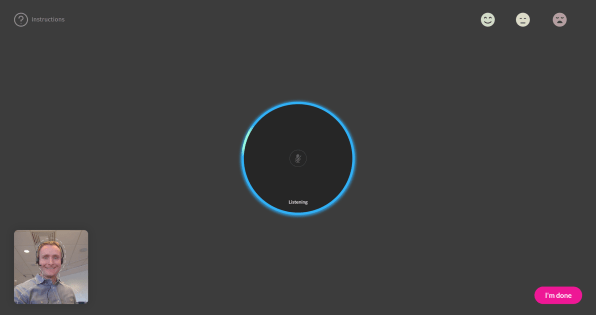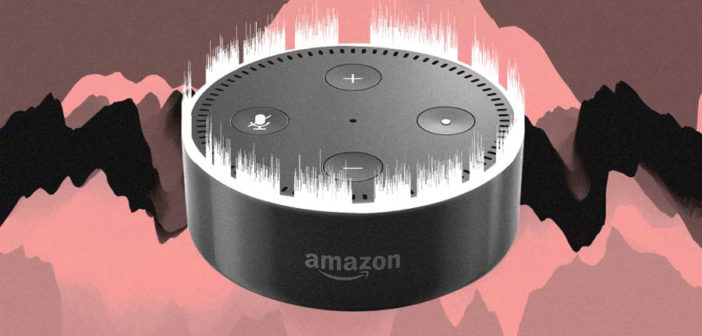Amazon is investing in a startup with an astoundingly simple premise: testing voice apps on real, human people.
At first glance, it looks like success: Amazon and Google’s voice assistants have sold tens of millions of units. The problem is, their voice apps–also called “Skills,” which range from ordering Dominos to playing Jeopardy–are not. Each app has its own conversational workflows and keywords, making them tricky to master. In fact, data suggests that after two weeks, only 3% of people continue using a new voice app, which makes the long-term viability of these voice assistants questionable at best.
This week, a few sources including the Amazon Alexa Fund and Jeff Bezos’s Bezos Expeditions invested a combined $2.5 million to learn more about the problem with the help of a new startup called Pulse Labs. Pulse Labs was born in 2017 through Amazon’s own Alexa incubator, which funds startups developing voice technologies, and it offers a relatively simple value proposition: It’s a subscription service that allows companies to validate their voice apps with users.
In other words,Pulse Labs will test out your company’s voice app with real people talking to it. Then they’ll analyze where things might have gone wrong.
Voice, of course, is an inherently tricky medium. Humans have evolved to talk, even in our own heads, meaning that we speak with incredible variety, person-to-person and region-to-region. “If you and I both wanted to order shoes on a voice app, chances are we’d interact with it differently, and our expectations of that response are different. Maybe you want a highly efficient assistant, maybe I want to have a conversation–what are the options, colors I can buy?” says Pulse Labs CEO Abhishek Suthan. “Voice is a very unstructured medium. It’s almost a double-edged sword. You can make the experience custom and personal to a user, but it’s very hard to design for.”

Pulse Labs’s revolutionary promise to the industry is a relatively mundane one: quality assurance testing. In theory, if you are, say, Starbucks, and you want to test a new unicorn latte-ordering bot, you can enlist Pulse Labs to put that experience in front of 200 women ages 25-35 and know for sure whether or not the entire conversation around unicorn lattes works.While natural language processing itself has gotten very good at these major companies–hovering close to 99% comprehension of the words you say–the idiosyncrasies of human dialog have proven harder to plan for. Suthan gives all sorts of examples from his company’s early clients, which actually include both Amazon and Google’s own voice product development teams. And these examples are often hilarious in their oversight of the basic human factors of speech.
For a national restaurant chain, a bot would ask, “Do you want to order more, or are you done?” People would often respond, “Nothing, I’m done.” And the bot would reply, “Sorry, nothing’s not on the menu.” In another instance, people in the Southeast would frequently respond with a “yes ma’am” rather than a simple “yes,” which wouldn’t register properly as a response. Even a major media brand had difficulty. When people said the publication’s name to activate it, they would often add a “dot com.” People literally couldn’t open the app because they had added two completely logical words to the keyword trigger.
Let me be clear: These laughably stupid mistakes really aren’t all that funnyfor an industry that’s seen what’s likely billions in investment over the last decade. And while consumers might continue to buy Echos and Google Homes, they’re showing dissatisfaction with their lack of engagement.Pulse Labs hopes to help companies with their own voice apps one at a time, as they automate their own tools to become a more self-contained analytics engine like web traffic apps such as Parse.ly or Chartbeat–except, you know, for UX.
“To me, it’s like, this is the most intuitive thing! The most important thing is the consumer,” says Suthan with an almost audible shake of his head, when I ask how a startup like his is even able to exist among the tech giants that literally invented the voice assistant market.
But he has a good answer: “They were investing very heavily in the natural language processing stuff. Clearly, the user experience aspect is something that Amazon and Google are very focused on [now]. Amazon’s investment in us supports that theory.”
–
This article first appeared in www.fastcodesign.com
Seeking to build and grow your brand using the force of consumer insight, strategic foresight, creative disruption and technology prowess? Talk to us at +9714 3867728 or mail: info@groupisd.com or visit www.groupisd.com




